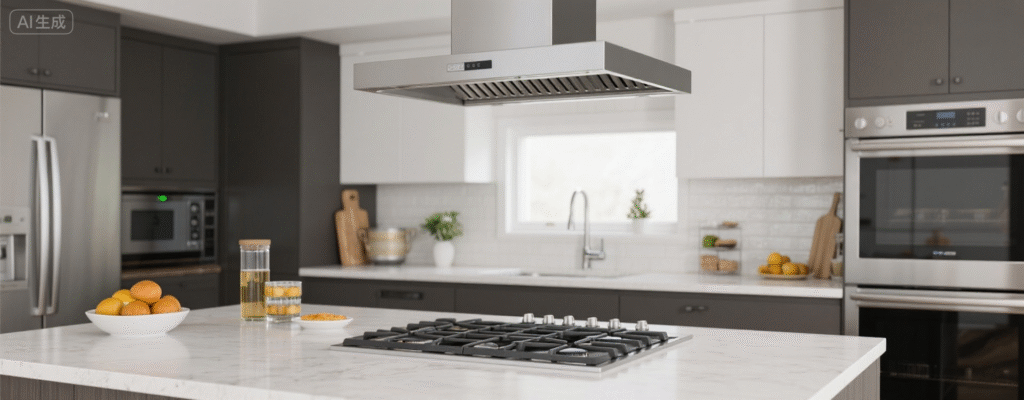For homeowners seeking a streamlined kitchen aesthetic, built in cooktop vents offer a powerful and discreet solution. Unlike traditional range hoods, these systems are integrated directly into the cooking surface, preserving precious overhead space and creating a clean, modern look. This article explores the innovative technology behind these vents and provides a practical guide to selecting the perfect model for your culinary needs.
The Technology Behind Downdraft Ventilation
Unlike overhead hoods that capture smoke and grease at the source and funnel it upward, built in cooktop vents employ a principle known as downdraft ventilation. These systems work by pulling airborne contaminants downward through a vent located behind or beside the cooking surface, then channeling them through ductwork that runs beneath the floor or within a cabinet to the outside of the home. The core mechanism is a powerful fan that creates a negative pressure zone, effectively capturing fumes before they can disperse into the kitchen.
The effectiveness of a downdraft system hinges on its power, measured in Cubic Feet per Minute (CFM). For optimal performance, especially with high-heat cooking methods like searing or stir-frying, a higher CFM is crucial. A landmark study by the Home Ventilating Institute (HVI), the leading authority on residential ventilation, has consistently emphasized the importance of matching CFM to cooktop output. Their certified ratings, which have been the industry standard for decades, provide a reliable benchmark for consumers. When considering your options, reviewing the wide selection of powerful and efficient ventilation systems is a great first step.
Selecting the Right System for Your Kitchen
Choosing a built in cooktop vent requires careful consideration of your kitchen’s layout and your cooking habits. The primary decision is between a retractable and a fixed static vent. Retractable models rise from the cooktop surface only when in use, offering a completely unobstructed view when lowered. Fixed models are a permanent part of the cooktop’s backsplash. Your choice will impact both aesthetics and functionality.
Beyond style, key factors to evaluate include:
- Venting Path: Can the system be ducted outside, or will it use a recirculating charcoal filter? Ducted models are significantly more effective at removing heat, moisture, and odors.
- Noise Level: Measured in sones, a lower number indicates a quieter fan—an important factor for open-concept living spaces.
- Compatibility: Ensure the vent is designed to work with your specific cooktop, whether it’s induction, gas, or electric.
For those with high-performance cooking needs, exploring advanced downdraft ventilation solutions that offer high CFM with low sone ratings is essential. Ultimately, the best system seamlessly integrates with your kitchen design while providing the robust performance you require.
In summary, built in cooktop vents are a sophisticated alternative to traditional range hoods, ideal for modern, open-plan kitchens where aesthetics and space are paramount. By understanding the downdraft technology that powers them and carefully assessing factors like CFM, venting type, and design, you can make an informed decision. A well-chosen system not only enhances your kitchen’s visual appeal but also ensures a cleaner, more comfortable cooking environment for years to come. Discover the perfect fit for your home by browsing a curated collection of premium kitchen ventilation today.
